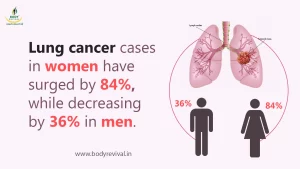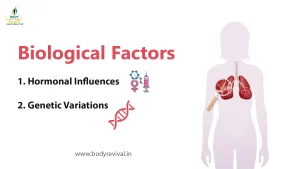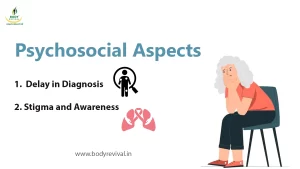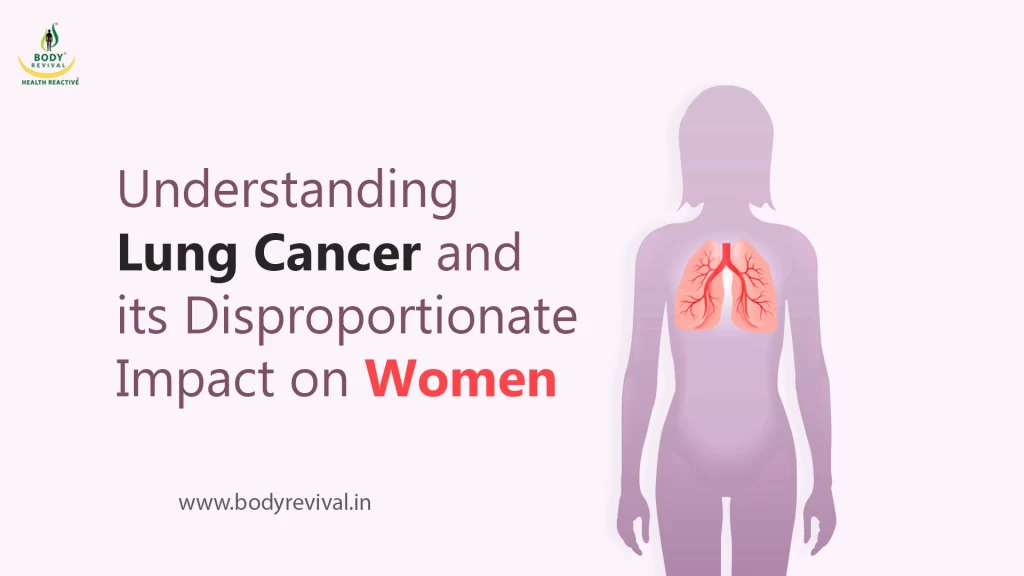Lung cancer is a serious illness affecting the lungs. While the causes are multifaceted, there exists a stark reality: women face higher rates of lung cancer.
This gender-based discrepancy warrants our attention and understanding.
This blog post delves into lung cancer, exploring its origins, risk factors, and the reasons behind its increased detection rate in females.
Lung Cancer: Unravelling the Enigma
Lung cancer is a disease when cells grow uncontrolled in the lungs. It is a disease that can affect anyone, irrespective of gender, age, or ethnicity.
It primarily occurs due to the inhalation of carcinogens, substances that trigger abnormal cell growth in lung tissues. These carcinogens can be found in tobacco smoke, air pollution, radon gas, and occupational exposures to certain chemicals.
Lung cancer in women
Studies reveal a troubling trend: over the last 43 years, lung cancer cases in women have surged by 84%, while decreasing by 36% in men.

Surprisingly, many of these affected women never smoked, making it even more concerning. Non-smoking women face more than double the risk of lung cancer compared to non-smoking men.
This phenomenon raises a critical question: why are women more susceptible than men?
Apart from smoking, various factors contribute to this risk, such as family history, exposure to secondhand smoke, radon, asbestos, pollution, and arsenic in drinking water.
But, here are some other factors also which may be the reason behind this skewed statistic.
Biological Factors

- Hormonal Influences: Some researchers speculate that hormonal differences between men and women might play a role. Oestrogen, a hormone found in higher levels in women, could potentially influence the development and progression of lung cancer cells.
- Genetic Variations: Genetic predispositions and mutations might contribute to the higher incidence of lung cancer in women.
Social and Behavioral Factors
1. Secondhand Smoke Exposure: Women are more likely to be exposed to secondhand smoke, especially in domestic settings.
Psychosocial Aspects

- Delay in Diagnosis: Women sometimes delay seeking medical help due to various reasons, including prioritising family needs over their health.
- Stigma and Awareness: Societal stigmas related to smoking and lung cancer might discourage women from discussing their symptoms openly. Additionally, a lack of awareness about the disease and its symptoms can lead to delayed medical consultations.
Empowering Change
To make things better, we need to find ways to stop lung cancer from happening. We can do this by understanding the reasons why more women are getting it. By knowing these reasons, we can help people and communities stay healthy.
We can start by teaching people about the things that make women more likely to get lung cancer. This includes information about our bodies, how we live, and what we breathe in.
Also, we should focus on finding lung cancer early, when it’s easier to treat.
Together, by learning, finding problems early, and helping people quit smoking, we can fight against cancer. This way, everyone can have a healthier life, no matter if they are a man or a woman.



























